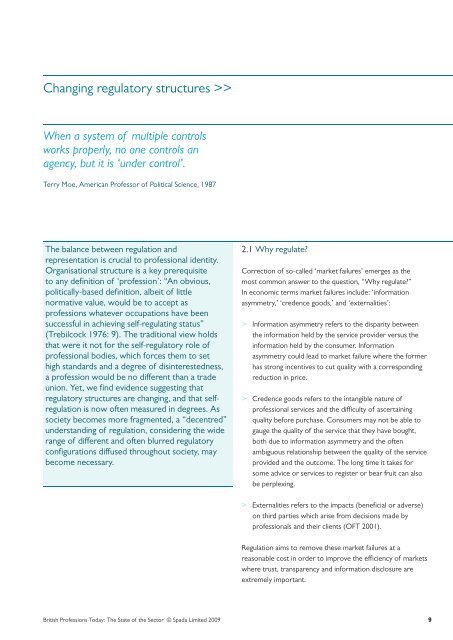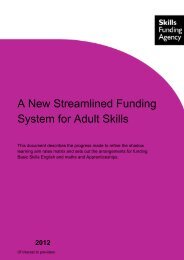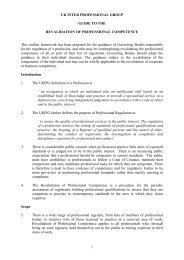BRITISH PROFESSIONS TODAY: THE STATE OF ... - Property Week
BRITISH PROFESSIONS TODAY: THE STATE OF ... - Property Week
BRITISH PROFESSIONS TODAY: THE STATE OF ... - Property Week
Create successful ePaper yourself
Turn your PDF publications into a flip-book with our unique Google optimized e-Paper software.
Changing regulatory structures >><br />
When a system of multiple controls<br />
works properly, no one controls an<br />
agency, but it is ‘under control’.<br />
Terry Moe, American Professor of Political Science, 1987<br />
The balance between regulation and<br />
representation is crucial to professional identity.<br />
Organisational structure is a key prerequisite<br />
to any definition of ‘profession’: “An obvious,<br />
politically-based definition, albeit of little<br />
normative value, would be to accept as<br />
professions whatever occupations have been<br />
successful in achieving self-regulating status”<br />
(Trebilcock 1976: 9). The traditional view holds<br />
that were it not for the self-regulatory role of<br />
professional bodies, which forces them to set<br />
high standards and a degree of disinterestedness,<br />
a profession would be no different than a trade<br />
union. Yet, we find evidence suggesting that<br />
regulatory structures are changing, and that selfregulation<br />
is now often measured in degrees. As<br />
society becomes more fragmented, a “decentred”<br />
understanding of regulation, considering the wide<br />
range of different and often blurred regulatory<br />
configurations diffused throughout society, may<br />
become necessary.<br />
2.1 Why regulate?<br />
Correction of so-called ‘market failures’ emerges as the<br />
most common answer to the question, “Why regulate?”<br />
In economic terms market failures include: ‘information<br />
asymmetry,’ ‘credence goods,’ and ‘externalities’:<br />
> Information asymmetry refers to the disparity between<br />
the information held by the service provider versus the<br />
information held by the consumer. Information<br />
asymmetry could lead to market failure where the former<br />
has strong incentives to cut quality with a corresponding<br />
reduction in price.<br />
> Credence goods refers to the intangible nature of<br />
professional services and the difficulty of ascertaining<br />
quality before purchase. Consumers may not be able to<br />
gauge the quality of the service that they have bought,<br />
both due to information asymmetry and the often<br />
ambiguous relationship between the quality of the service<br />
provided and the outcome. The long time it takes for<br />
some advice or services to register or bear fruit can also<br />
be perplexing.<br />
><br />
Externalities refers to the impacts (beneficial or adverse)<br />
on third parties which arise from decisions made by<br />
professionals and their clients (<strong>OF</strong>T 2001).<br />
Regulation aims to remove these market failures at a<br />
reasonable cost in order to improve the efficiency of markets<br />
where trust, transparency and information disclosure are<br />
extremely important.<br />
British Professions Today: The State of the Sector © Spada Limited 2009 9










